

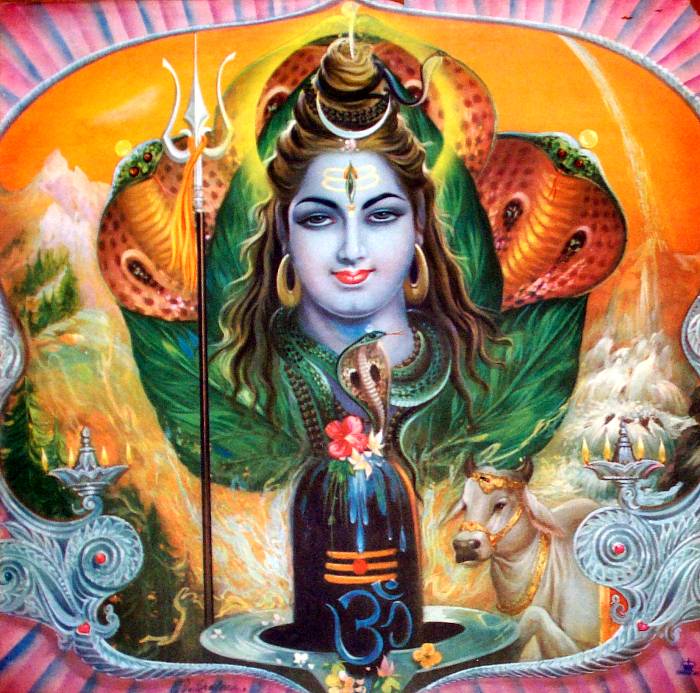
It is also frequently shown along with Shiva and other images (bazaar art, c.1980's)
Source: ebay, Sept. 2007
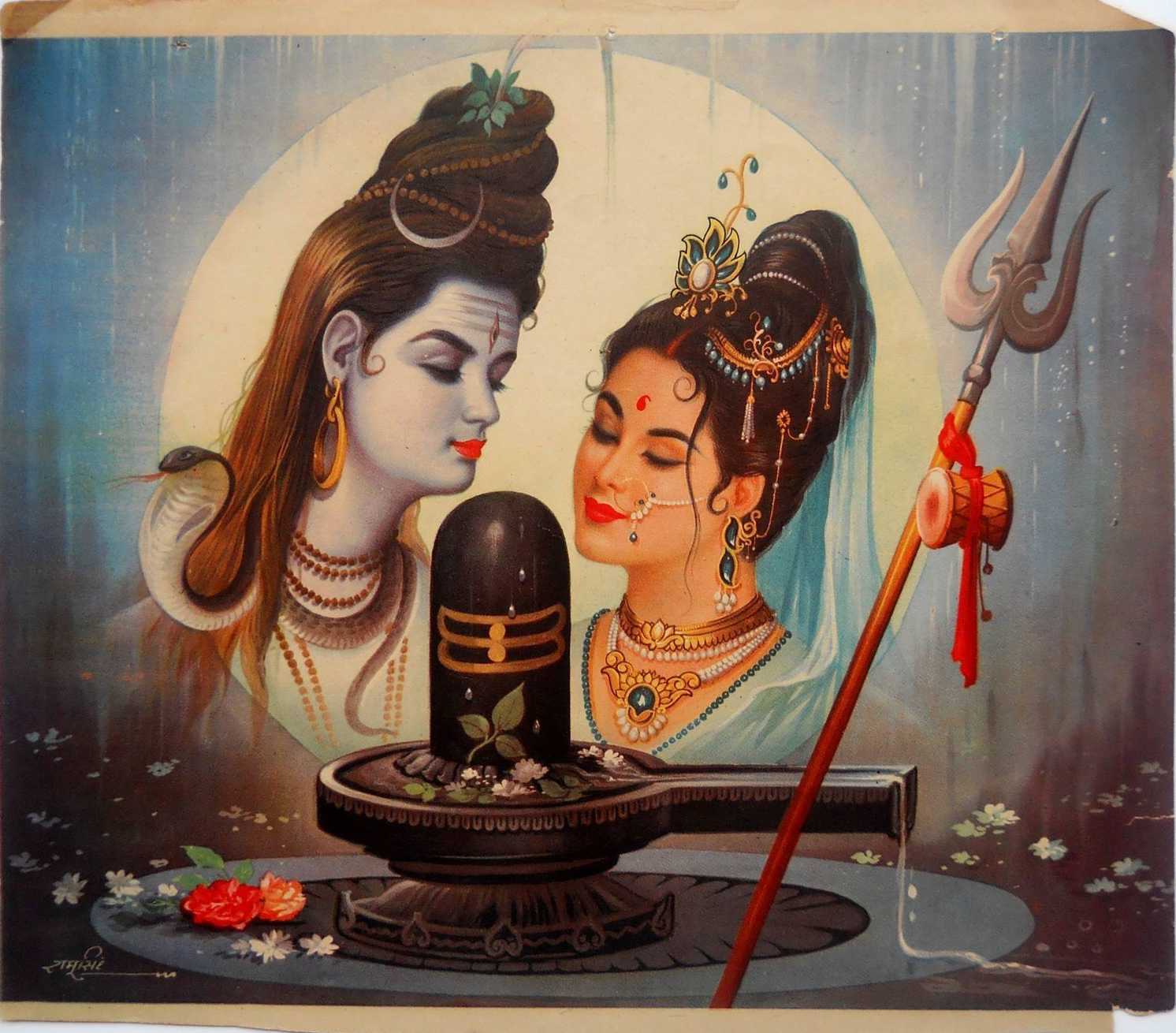

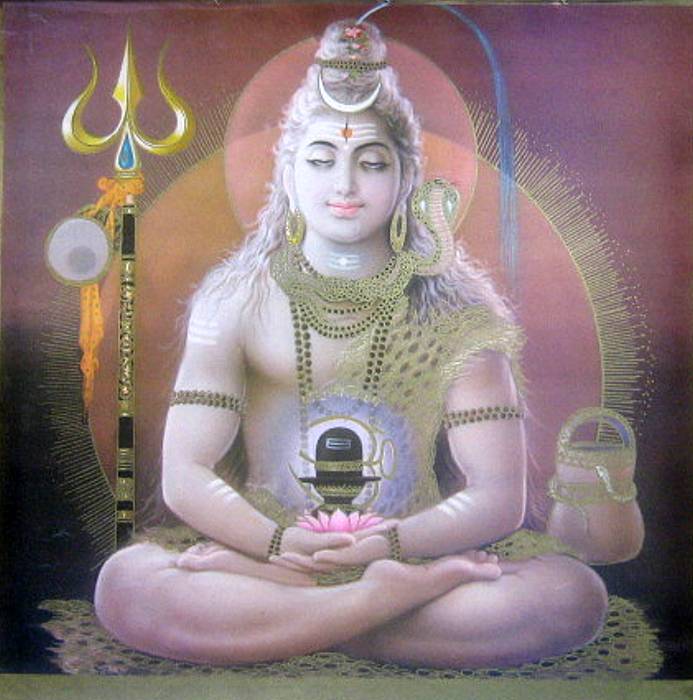
Shiva meditates on the lingam, which has an OM behind it (bazaar art, c.1980's); *another view of Shiva as an ascetic meditating on the lingam*
Source: ebay, Nov. 2007

"Shivaling Pendant," a piece of modern religious jewelry
Source: http://www.exoticindiaart.com/jewelry/JB09
(downloaded June 2001)
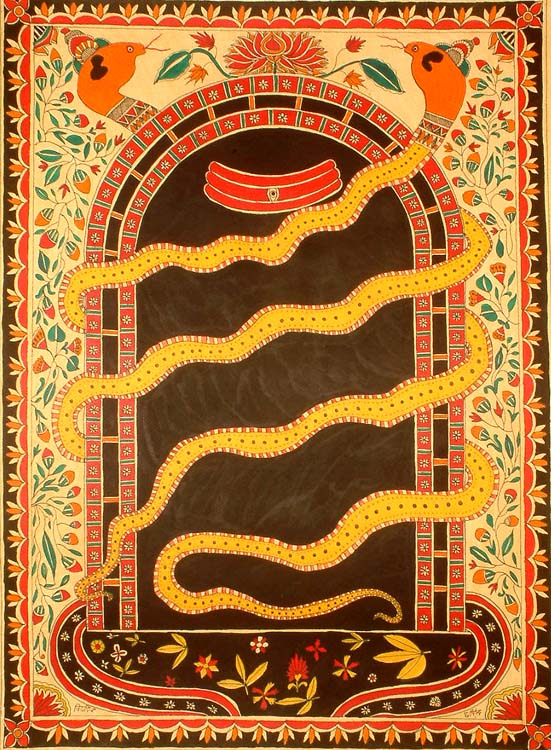
A modern madhubani version by Vidya Devi and Dhirendra Jha
Source: http://www.exoticindia.com/product/DG39/
(downloaded Apr. 2006)
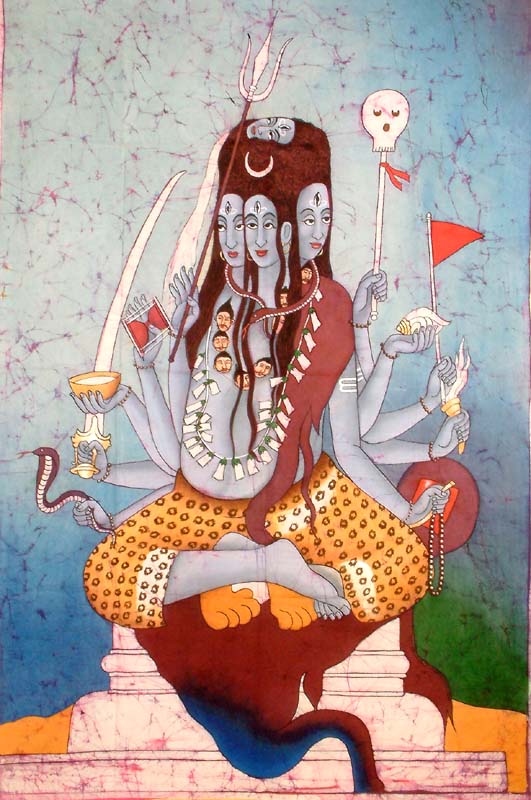
A striking modern batik in which Shiva's form is merged into a lingam shape
Source: http://www.exoticindia.com/product/BG44/
(downloaded Feb. 2005)
"Panchanana or Five-Headed Shiva. Batik Painting On Cotton. Here Shiva is depicted with ten hands and five heads, four facing each of the four directions and one embedded in his matted locks, facing upwards. A fifth head at the back of his head lies invisible. Each of the faces has three eyes. His ten hands hold various implements:
The right hands hold the following : Trident (trishul), damaru (
tabor-drum); a skull-cup with a lock of hair; sword, and finally a
live serpent. The left hands hold: a staff tipped with a skull;
conch; a red banner; a flamed torch, and lastly a shield. The
upper part of Shiva's body is nearly bare, being only partially
draped in an elephant skin, the head of which can be seen on his
left shoulder. The lower torso is clothed in a tiger skin, the
paws of which slain animal are visible just under the crossed legs
of Shiva.. From his awesome ensemble of heads flows the Ganges,
and also hang down locks flowing across his chest like venomous
snakes. The hair on his chest too seems vibrant like an army of
ants. A black serpent placed on the neck compliments the necklace
containing a serpentine amulet, in addition he wears a garland of
ketaki flowers and another one composed of severed human heads."
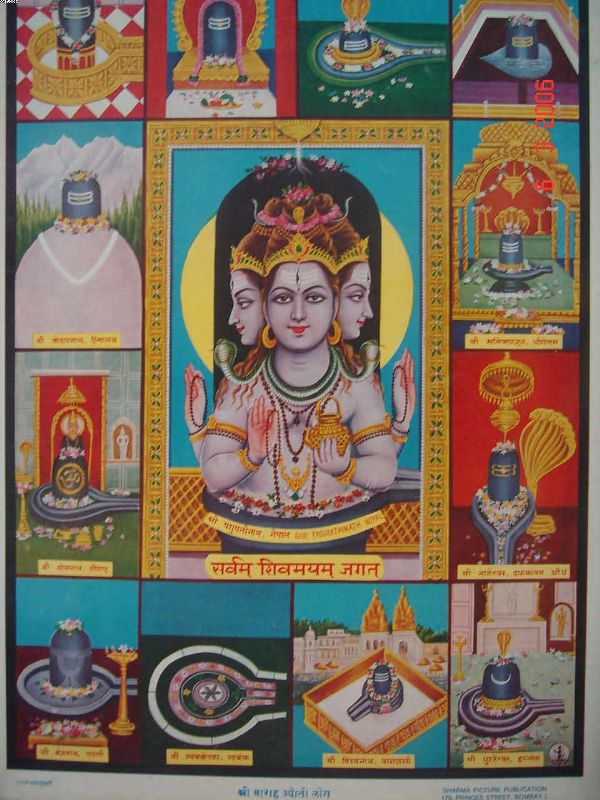
A religious poster of the twelve "jyotirlinga" ("light-linga") pilgrimage sites (1960's-70's); and *another such view, 1990's*; *a very detailed view, with each temple site clearly labeled*
Source: ebay, Mar. 2006
"1. Somnath is located at Prabhas Patan in Saurashtra in Gujarat and is the foremost of the 12 Jyotirlinga Shrines. 2. Sree Sailam - is located near Kurnool in Andhra Pradesh. 3. Mahakaleshwar Jyotirlinga shrine is located in the historic city of Ujjain. 4. Omkareshwar in Madhya Pradesh is home to the Omkareshwar Jyotirlinga shrine and the Amareshwar temple. 5. Kedarnath - the Northernmost of the Jyotirlingas located in Uttaranchal. 6. Bhimashankar - is located in the Sahyadri hills of Maharashtra. 7. Varanasi - is located in Benares now known as Varanasi district of Uttar Pradesh State. 8. Tryambakeshwar - is located near Nasik in Maharashtra. 9. Vaidyanath temple at Deogarh is located in Jharkhand. 10. Nageshwar near Dwarka in Gujarat. 11. Rameswaram is located in southern Tamilnadu. 12. Grishneshwar Jyotirlinga Shrine is a temple located in the vicinity of the tourist town of Ellora, in Maharashtra "
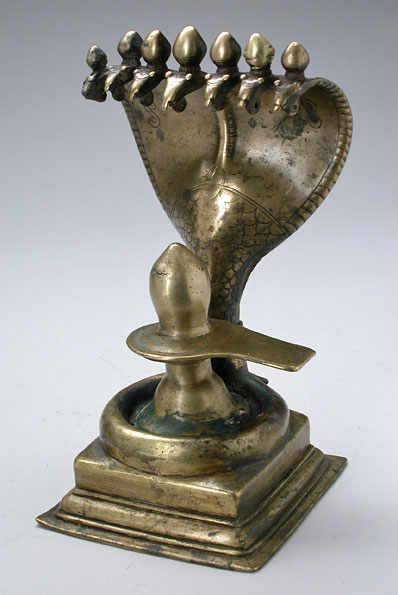
A cast bronze Shiva-linga, guarded by Shiva's protective cobra, from Maharashtra, 1700's or 1800's
Source: ebay, Feb. 2007
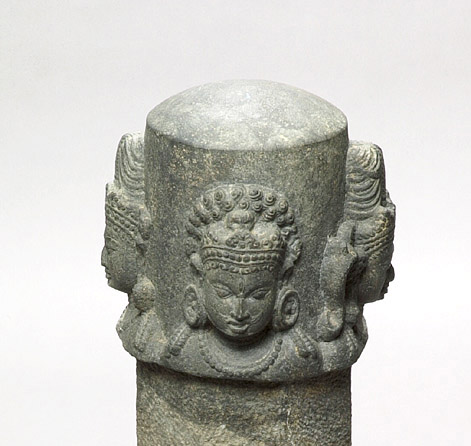
Lingam with four faces (chaturmukhalinga), 12th century; *close views of two faces*; *close views of the other two faces*
Source:
http://search.sothebys.com/browse/viewLot/lotDetail.jsp?LOT_ID=7289
(downloaded June 2001)
"Front Shiva head with tall jatamukuta and beaded headress, rosette earrings, finely incised arched eyebrows, almond-shaped eyes, straight nose, gently smiling lips, beaded collar and tresses escaping over shoulder. Published in Pratapaditya Pal, A Collecting Odyssey: Indian, Himalayan, and Southeast Asian Art from the James and Marilynn Alsdorf Collection, exhibition catalogue, The Art Institute of Chicago,1997, cat no. 9, pp. 17, 272 catalogued by Cynthia Elden. 23 1/2" tall."

A Shiva-lingam from Bhumara, with face in relief, from the Gupta period, c. 475 CE
Source: Courtesy of Prof. Frederick Asher, Univ. of Minn., October 1999.
 |
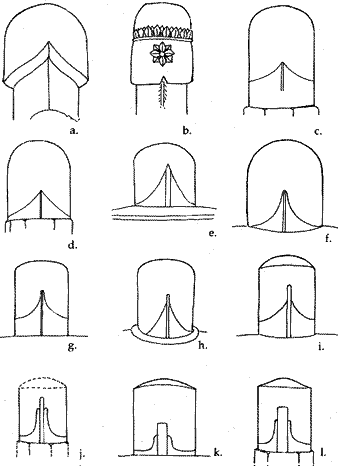 |
A very early Shiva-lingam from Gudimallam, c.100 BCE,, made of polished sandstone; and a look at some lingam shapes over time: "a) 100BC, b) ? 200AD, c) 436AD, d) ?400AD, e) 600AD, f+g) 650AD, h) 681AD, i) 733AD, j) 918AD, k) 1025AD, l) recent"
Source: http://gunn.co.nz/anand/hinduism/lingum.html
(downloaded Jan. 2008
== Indian Routes index == Indian Routes sitemap == Glossary == FWP's main page ==